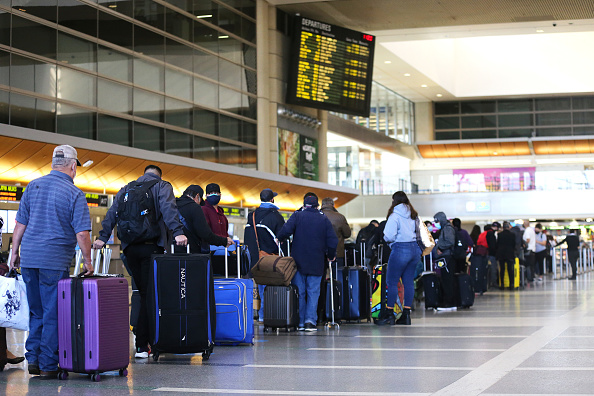President Joe Biden is launching a national COVID-19 strategy as his first order of business at the White House.
As the death toll in the country continues to rise and new variants of the virus generate new panic, Biden hopes that the newly installed mask requirements on federal and travel properties will help contain the coronavirus pandemic.
One of the first executive orders he signed on Wednesday included the use of face masks on all federal properties and by all federal and contract employees, which applies to “federal employees on duty or on site, federal contractors on site and other individuals in federal buildings and on federal land. “
“This executive action will direct agencies to take measures to demand compliance with CDC guidelines on the use of masks and physical distance in federal buildings, on federal lands and by federal and contracted officials,” said response coordinator COVID-19 of Biden, Jeff Zients, told reporters.
“This is not a political statement. It is about the health of our families and the economic recovery of our country,” he added.
The masks quickly became political after Trump repeatedly refused to wear a mask in public during the early months of the pandemic. His government was also discouraged from wearing masks and the White House hosted several unmasked events last year.
Federal property will extend beyond the country’s capital and apply to federal buildings across the country, including federal courts and state capitols.
Although a president has no authority over the mandate of state and local officials, he urged them to enact their own mandates. Most states have already issued mask requirements, however, governors in Alaska, Arizona, Florida, Georgia, Idaho, Mississippi, Missouri, Nebraska, North Dakota, Oklahoma, South Carolina, South Dakota and Tennessee have chosen not to issue a state order.
Biden is expected to continue to encourage COVID-19 security measures by signing 10 pandemic-related executive orders on Thursday, which will mark a year since the first COVID-19 case was reported in the United States.
One will include a mask requirement for Americans traveling in airports, airplanes, ships, intercity buses, trains and public transportation, although it is unclear when the travel order will go into effect.
Although airlines already require passengers to wear masks and prohibit those that do not, masks are difficult to apply without a federal mandate. Without an order from the president, passengers tried to discuss their rights with the cabin crew.

Mario Tama / Getty
Airlines and unions have been calling for an executive order since the start of the pandemic, but have found little help from the Trump administration.
Biden officials told the Associated Press that his efforts to combat the virus were also hampered by the previous administration’s lack of cooperation during the transition of power.
“Almost a year later, we still don’t have basic federal security requirements, like a mask mandate,” said the Association of Flight Attendants-CWA in a statement released last week. “We look forward to working with the Biden government to protect aviation workers and passengers.”
As travelers started flying again in early May, airlines in the United States began adopting masking policies to help prevent the spread of COVID-19 and provide safer travel experiences for concerned passengers.
A few months later, they tightened their rules and restricted the types of facial coverage allowed on airplanes. Passengers were warned that failure to comply could result in the airline being banned from flying during the pandemic.
According USA today, nearly 3,000 passengers were banned on eight airlines: Delta, United, Spirit, JetBlue, Frontier, Alaska, Hawaiian and Allegiant. However, as the country’s largest airlines, American and Southwest, do not provide these numbers, the total number is expected to be much higher.
Newsweek contacted the White House for further comments, but received no response before publication.
